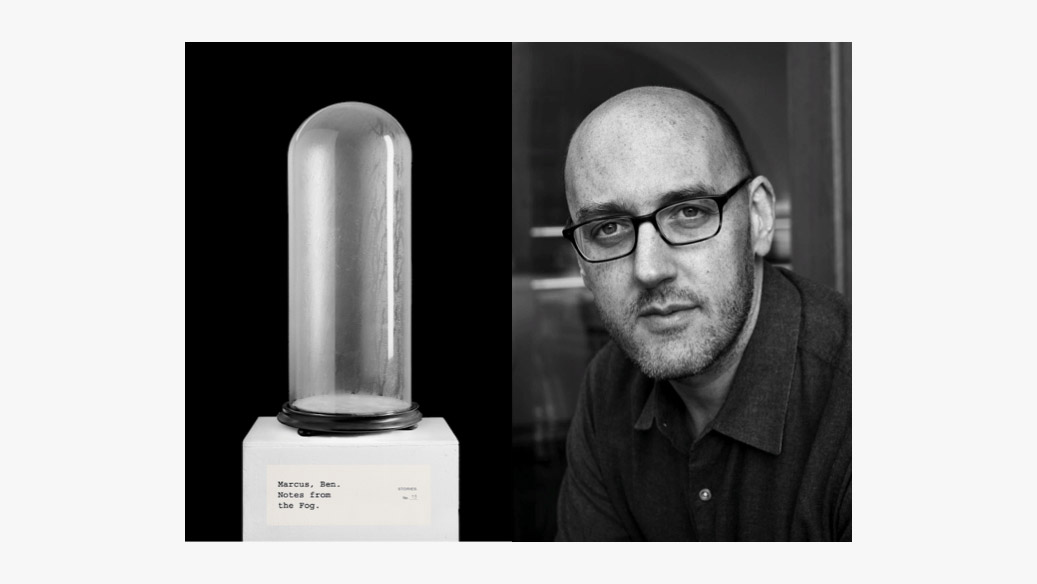The super-talented Ellis Avery is the author of The Teahouse Fire, (Riverhead 2006), which won three awards and was translated into five languages, and The Smoke Week (Gival Press 2003) an award-winning personal account of life in lower Manhattan after 9/11. Her critically acclaimed new novel The Last Nude, centering on the relationship between Art Deco painter Tamara de Lempicka and her muse, Rafaela, was released in January this year. Before her reading from The Last Nude last week at KGB bar, Ellis and I sat down to chat about Paris, artistic ambition, historical fiction, and painting classes with naked models.
– Ella Delaney
Congratulations on the release of The Last Nude! There’s a big tradition of Americans going off to Paris and writing there; I’m thinking of writers like Henry James, Edith Wharton, Gertrude Stein, and Earnest Hemmingway. Do you think Paris still holds a certain fascination for American writers, and if so, why?
Paris was the epicenter of Anglophone modernist literature in the twenties and thirties. Americans went there and it set them on fire. Paris has always been a small, dense city, and the idea of being there when you could have just happened to run into pioneers in literature, art, music, dance, and fashion must have been incredibly seductive.
I first encountered world of Anglophone Jazz Age literary Paris when I was 16, very close in age to my narrator, Rafaela, the young woman who modeled for the Art Deco painter Tamara de Lempicka’s most famous works. I lived in Paris the summer between high school and college, and attended the American University in Paris. I took a class called Literary Paris in the Twenties and Thirties with Noel Riley-Fitch, the author of Sylvia Beach and The Lost Generation. Sylvia Beach was the founder of Shakespeare and Company, which was the center of the Anglophone literary world in Paris, and she was also the publisher of Ulysses.
Sylvia Beach was the first famous woman I ever encountered who had a woman lover. Beach’s partner Adrienne Monnier owned the bookstore across the street, which was the center of the French avant-garde literary movement. Both women were at the center of this world, and I was on the verge of coming out myself, so their story spoke to me both personally and on a literary level.
Although the centerpiece of Dr. Riley-Fitch’s class was her meticulous biography of Sylvia Beach, we also read Hemingway, Fitzgerald, Joyce, Stein, T. S. Eliot, Pound, Beckett, Robert McAlmon, and Djuna Barnes: what a feast! Reading all of these things that were created in Paris—while living in Paris!—was a seductive and mind-blowing experience. Paris changed me and I knew I had to write about it one day.
In the years that followed, I’d see books come out from time to time about literary Paris and particularly lesbian literary Paris, and I would think, oh, I meant to go back to that world. Still, what really put me over the edge was seeing Tamara de Lempicka’s 1927 painting Beautiful Rafaela at de Lempicka’s Royal Academy of London show in 2004. The painting is gorgeous all by itself, but what startled me was the caption, which said de Lempicka met the model in the Bois de Boulogne in 1927, drove her back to the studio, and the girl became her lover and her model: their relationship yielded six paintings. That painting—and that caption—was the spark that lit up all the Paris material I’d been gathering and storing in my mind over the years. The Last Nude imagines and maps the collisions and overlaps between Tamara de Lempicka’s world and Sylvia Beach’s.
Is there an element of exploitation in creating art? Do you think art in a sense impedes relationships; the artist is often observing, rather than feeling, or living?
After I finished writing The Last Nude, I realized I had been coming to a kind of shadow-articulation of my values by writing about their opposites. I value honesty, and I wrote about a liar. I value loyalty, and I wrote a novel about betrayal.
Moreover, I wrote a novel called The Last Nude, and I found out that I value modesty. Not modesty as in what one wears—I love clothes!—but in two other senses. First, I mean the kind of reticence that allows you not to engage sexually with everyone you’re attracted to, but rather allows you to form one kind of bond with your spouse and a clearly different kind of bond with your friends. But in The Last Nude, what sex means is contested and confused, and when it comes to her model, Rafaela, Tamara de Lempicka really exploits that confusion.
Second, I mean a modesty of ambition. I believe in towering ambition when it’s you alone with your work, but out in the world, I don’t think being a good artist is more important than being a good person. Tamara de Lempicka would disagree, and so would James Joyce, who figures peripherally in the novel. But Rafaela comes to believe otherwise.
Last of all, to come back to this articulation of values, it really hit home for me how much I value reciprocity. I wrote a novel about a love affair between a painter and a model in which the model thinks what she has with Tamara is a reciprocal relationship, while Tamara, despite feeling real passion for Rafaela, also assumes that sex is her prerogative as a painter. There’s an extent to which any model, any warm body, would do. And there’s a moment when Rafaela finally realizes this. So this is how you loved me, she thinks. And she says: I loved you differently.
At the same time, however, that I show Tamara exploiting Rafaela, and regretting it to the end of her days, I also give her—and the choices she made, to put art before love—the last word: I wouldn’t need to figure out for myself whether I thought it was more important to be a good artist or a good person if it weren’t a real question, and I want to give serious weight to both sides.
Obviously The Last Nude deals with the recreation of real personalities. Was it constraining to write about a real person, or sort of liberating, because you had some real material, imagery and ideas to work with/play with?
My biggest source of inhibition as a writer is wondering if anyone will care what I have to say. Research– and writing historical fiction– helps me overcome that block: obviously someone– the scholar or biographer I’m reading– thought it was worth writing down the first time, so it seems less crazy to think someone– the reader of my novel– will think it was worth writing down a second time. The historical facts I work with are the stepping stones that let me get across the river of the novel, or the vines that let me brachiate from branch to branch above it.
People often ask me, “How much of The Last Nude is true?” Anything that sounds like the product of an overheated imagination– Tamara picking up Rafaela in a public park, the sex with sailors in shacks by the Seine, Tamara eating oysters off the body of a young girl at a party, the cocaine, the absinthe, and so on– all that is documented in Laura Claridge’s biography of de Lempicka and de Lempicka’s daughter Kizette’s biography of her mother. I see that as one kind of work that historical fiction writers do, a kind of DJ work, bringing together samples and laying them side by side: you could see The Last Nude as a mashup of my Lempicka research and my Sylvia Beach/Earnest Hemingway reading.
A second kind of work historical fiction writers do involves engaging with gaps in the historical record, making things up wholecloth. In the case of The Last Nude, we don’t know anything about the actual Rafaela: not her nationality, language, or religion, not her last name, not even if her first name was really Rafaela. (Tamara might have chosen the name in homage to Ingres, her favorite painter, and to his erotically-charged paintings of Raphael and his curvy brunette model/mistress.) But that’s where I get to step in and say whatever I want. Some of my choices I made for the sake of expedience: I promised myself that after a novel set in 19th-century Japan I wasn’t going to write another novel full of translated dialogue, so I made Rafaela American. But some of my choices I could make for thematic reasons, because I wasn’t just painting-by-biographical-numbers: more on that later.
A third kind of work that historical novelists do is counterfactual. Everyone knows the real Ernest Hemingway lost all his work in 1922: it was stolen when his wife left it on a train. The real Hemingway never forgave his wife, but he got over the loss of his work and went on to become, well, Ernest Hemingway. My Hemingway figure, Anson Hall (Anson was the first name of one of Hemingway’s grandfathers, Hall was the last name of the other), is the one who never gets over the loss of that work: he becomes a kinder person than Hemingway, but a sadder one, too.
So why was I doing these three kinds of work in the same novel? When I began telling myself the story that became The Last Nude, I had just published a first novel that did well, and I was nervous about Sophomore Slump: what if I was a one-book writer? I began thinking more broadly about creative failure, and how grateful I am to artists in every discipline who keep working despite the many obstacles they face.
In order to let me (and, I hope, readers) think about what keeps artists going, The Last Nude focuses on three artists, each of whom loses his or her way. One is destroyed by surfeit. After getting everything she wants– money, a title—Tamara de Lempicka, the Art Deco painter whose affair with her model Rafaela is the cornerstone of The Last Nude, loses the hunger that made it possible for her to work. Another of these artists is destroyed by loss. My Hemingway character, Rafaela’s friend Anson Hall, loses all of his manuscripts, and never really picks himself up again. My third artist, Tamara’s model Rafaela, finds success, albeit in an under-the-radar medium, the trivialized and demoted art of fashion. But history is not on her side.
Now in the case of Rafaela, nobody’s going to feel the loss of her work in the world, because she’s fictional. And in the case of Tamara de Lempicka, so few people have heard of her that I’d have to do too much explaining if I tried to mourn the counterfactual, fictional loss of her work. So I based my third artist character, Anson, on the single-most-read American of 1920s literary Paris, Ernest Hemingway, because I wanted readers to really feel the absence of Hemingway’s work. I myself would be so much the poorer if Hemingway had never managed to write A Moveable Feast.
So to wrap up a very long answer to your question, I guess I use fact, counteract, and wholecloth fabrication all to the same end: to tell, I hope, a good story, in the richest possible way.





